Today I continue my series about land use in Scotland. The last post I did on this topic provides background and relevant links – so to catch up see What do new estate owners mean for Scotland's land? As before, I am using Strathearn as my case study, but the picture is similar across rural Scotland.
I am writing this from the perspective of someone who lives in the area and feels that the surrounding landscape is a part of my personal world – and that of others working and living here. The landscape provides a beautiful backdrop to our every day lives – the views make simple acts a pleasure, such as looking out of the window or strolling into the village to buy milk.
It is also terrain that I and many others walk and mountain bike, often visiting favourite landmarks, such as the Balmuick Stone Circle and Sput Rollo waterfall. At other times it's just good to get outside and enjoy the sun on our faces and the wind in our hair, while noting the progress of seasons through natural signs.
As I discussed in my previous land use post, when local estates and farms change hands, it causes anxiety. What will the new owner do to our precious places? Some, who don't follow such issues as closely, only become distressed when action is taken that upsets them – such as mass felling of trees or bulldozing new tracks across unspoiled ground.
Not long after Foresight Sustainable Forestry bought Fordie, a new green investment company arrived on the scene. Neighbouring Invergeldie estate went on the market and was snapped up by Oxygen Conservation. In this second case, relations between the new owners and the local community have been more strained.
This post is long, so if reading it in an email you may need to click through to the website link to see it all.
Invergeldie
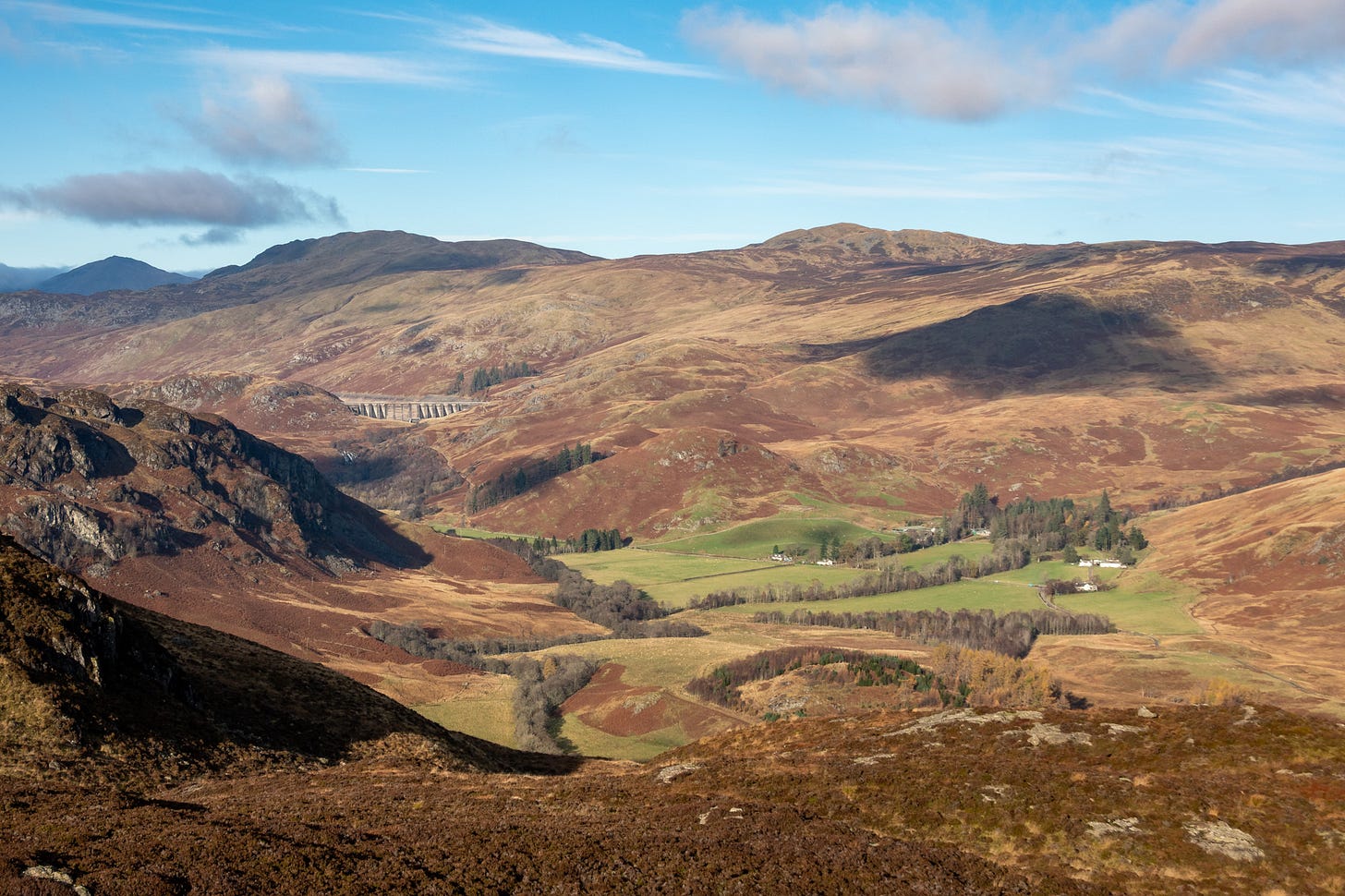
The new regime had a promising start. Oxygen Conservation invited locals up to Invergeldie Lodge to view their draft plans for rewilding over refreshments. We were met by a bunch of young, clean-cut city types, who seemed excited to be suddenly responsible for such a ‘wild’ and ‘remote’ place. They didn’t seem to know much about Scotland or rural life, but we were happy to give them the benefit of the doubt.
Big maps showed the areas where they intended to restore peat and plant new native woodland on the east side of Glen Lednock. They introduced us to a business called Tree Story who would plan and deliver the planting (they appeared to be a bit more aware of potential issues). Then we were led on a short walk up the glen to gain a perspective over the area they planned to plant.
It was a lovely day and we paused on the track while we had brief talks from Tree Story and the estate shepherd, who told us that he would be losing half his 2000 sheep in the autumn when they reduced the grazing. He would also need to learn a new form of stock management, as the plan was to add cattle to the grazing regime.
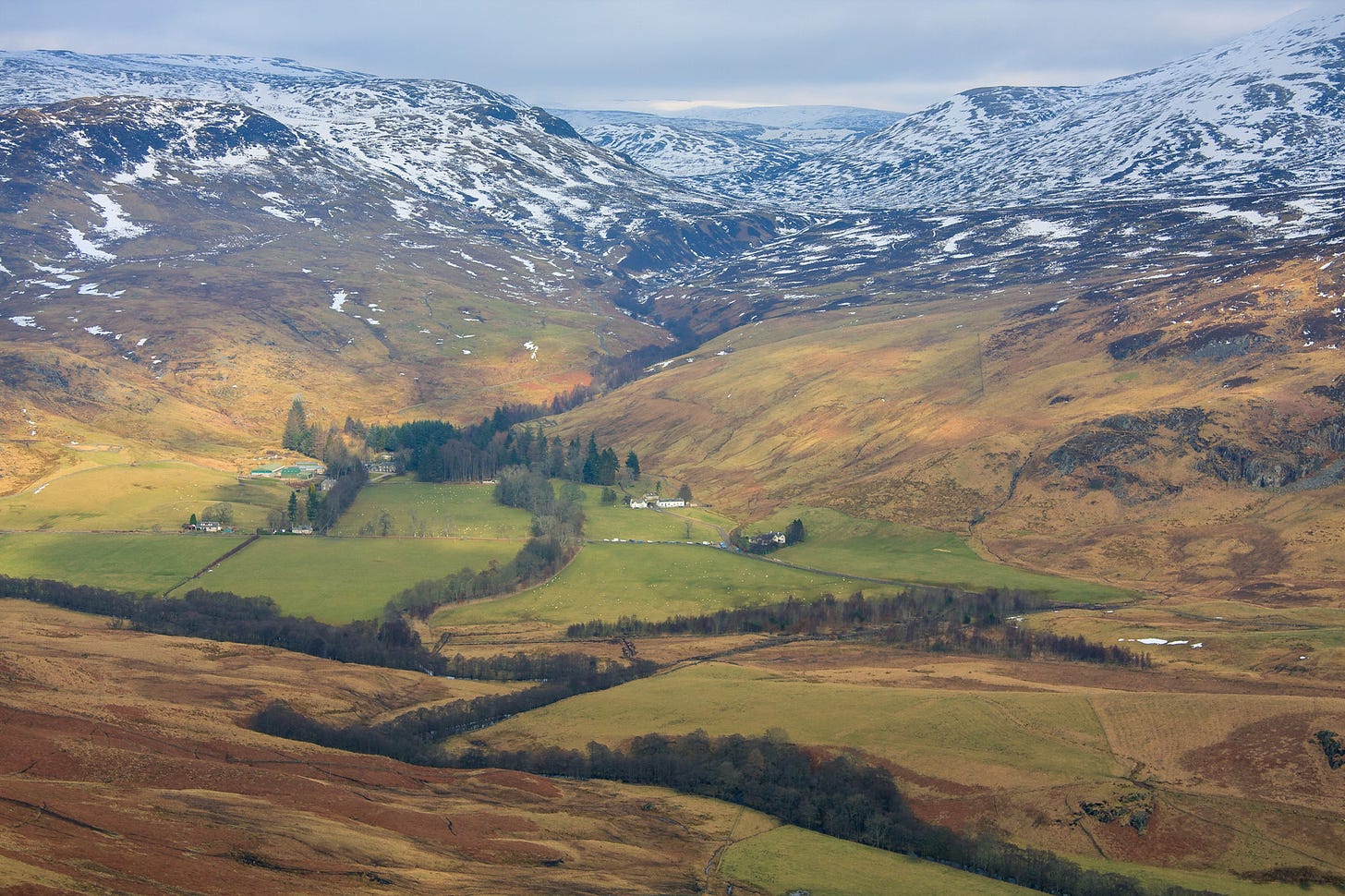
At first Oxygen Conservation didn’t seem recognise the illogicality of restoring trampled, overgrazed peatland and leaving it just outside the deer fence proposed to encompass the planting land. Red deer traffic was likely to become even more intense along and above the fence line when they were excluded (after this was pointed they moved the proposed fence line up the hill).
Some tenants of the estate who attended were, understandably, nervous of the future. Would Oxygen want to upgrade their cottages then rent them for a better price as holiday lets?
We were somewhat reassured because they had employed a very switched on local as the conservation manager for the estate. But that comfort was short lived (more later).
My focus was mainly on access, as Oxygen Conservation obviously knew little about outdoor access in Scotland and a deer fence was a potential impediment to responsible access across the land. Not only do two long distance rights of way cross the estate, it also encompasses Ben Chonzie, one of Scotland’s most popular Munros (mountain over 3000 feet), and Creag Uchdag, an attractive Corbett (mountain over 2.500 feet). As well as walkers, the land is used by mountain bikers, often taking long cross-country routes and rock climbers, with some of the best bouldering in the country near Loch Lednock Dam.
Oxygen Conservation seemed amenable to providing gates in their new fence on routes that walkers and mountain bikers were most likely to use, so I and others gave them more information during the consultation period. We also requested that the locked gate that has prevented vehicle access to Loch Lednock Reservoir in recent years be reopened.
Quite a number of questions were asked, including about the morality of their funding model – taking public money to restore land degraded by previous land use then sharing profits with investors (rather than giving it back to the public purse). One question was whether they were thinking of renewable energy, but that received a vague and dismissive response, giving the impression that it might be a consideration sometime in the future.
Low Carbon
Distrust soon set in, precipitated by the appearance on the scene of Low Carbon with a proposal to build Glen Lednock Windfarm on the west side of Invergeldie estate. Oxygen Conservation kept a low profile, as if it had nothing to do with them, but a bit of digging soon revealed that they were sister companies, both owned by Oxygen House. This sudden news, which they had hidden from us at their open day (although plans were well advanced) resulted in the resignation of their local conservation manager, who had been kept in the dark.
The planned site was rolling upland moor, the territory of golden eagle, peregrine falcon and other raptors, as well as increasingly threatened waders. They were planning some of the highest wind turbines ever built, which would dominate the landscape for miles around, especially from mountain tops in this region, such as Ben Chonzie, Ben Vorlich, above Loch Earn, and the Ben Lawers range on the far side of Loch Tay.
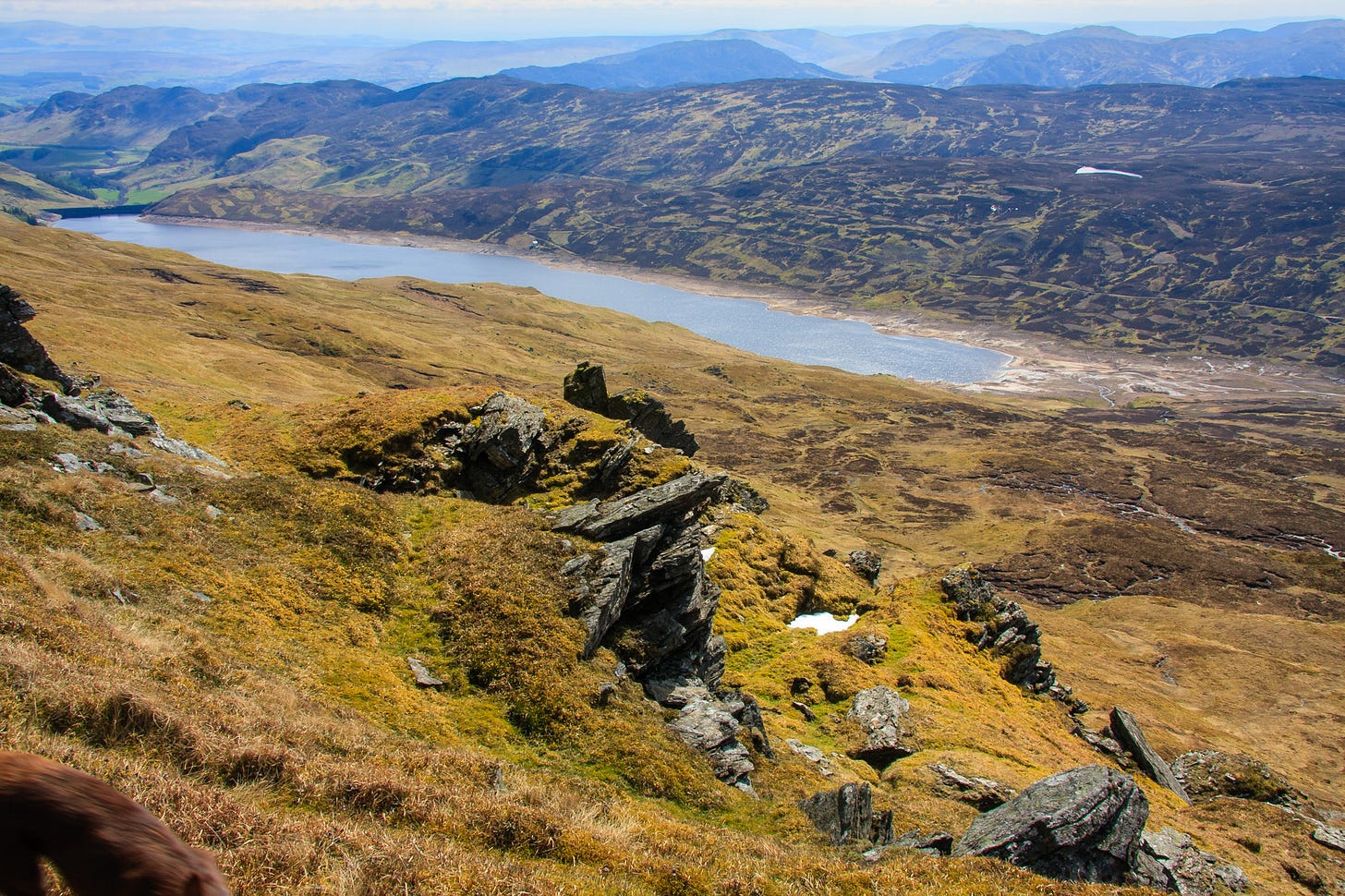
The area is a mix of peat bog and rocky hills. I can’t see how the carbon trapped by restoring the peatlands on the other side of the glen will compensate for the large loss of stored carbon in the peat that will be dug up to build the turbine bases and access tracks. That’s not even taking into account the carbon released by mining iron ore for the turbine and making enormous amounts of concrete.
Not all locals are against wind farms per se. Many see them as valuable contributors to energy production, if built in the appropriate place. Some positively support this proposal, partly because of the potential financial benefit to the community. However, Low Carbon appear to be offering the lowest going rate of community contribution and have caused upset by sidelining community representatives in their considerations about how that might be allocated.
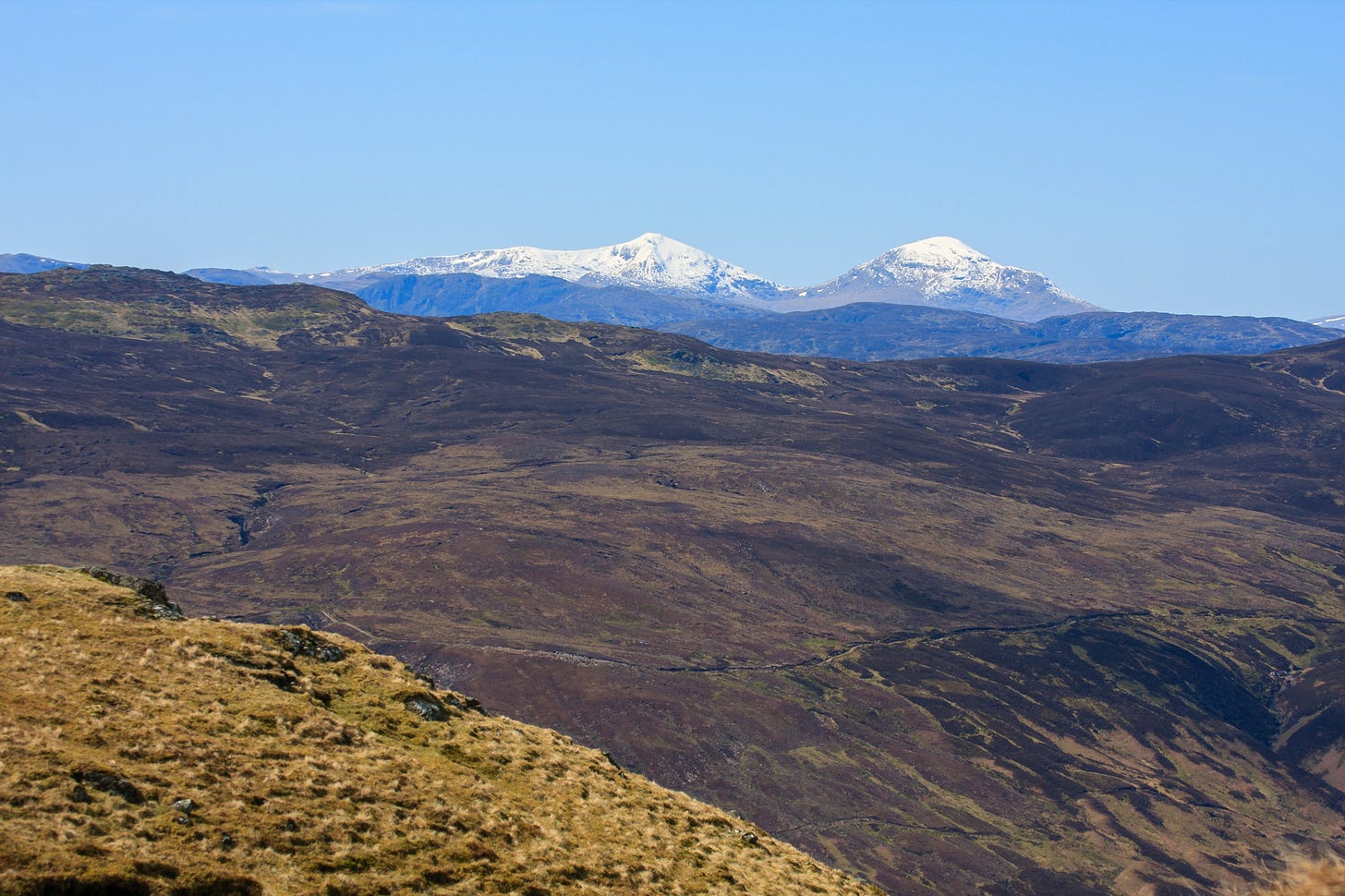
The necessary access track – a major build, wide and strong enough for turbine towers and blades to be transported to the site – is a point of particular concern. The single-track public road would be impassable; in the lower reaches of Glen Lednock it takes tight bends through an oakwood designated a Site of Special Scientific Interest and passes through a narrow gap above the Deil’s Cauldron waterfall.
The glen is incredibly beautiful and the proposed route Low Carbon eventually revealed cuts across woods and pastures on the glen’s east side. In one part it would turn a peaceful, grassy right of way beside the river (on the other side of a hill from the minor road) into a major gravel highway.
I wonder how many, if any, of Oxygen Conservation’s (or Low Carbon’s) staff have walked this route and have any sensitivity to its special character, with Cnoc na Sithe, the hillock of the fairies, on the opposite side of the wooded riverbank.
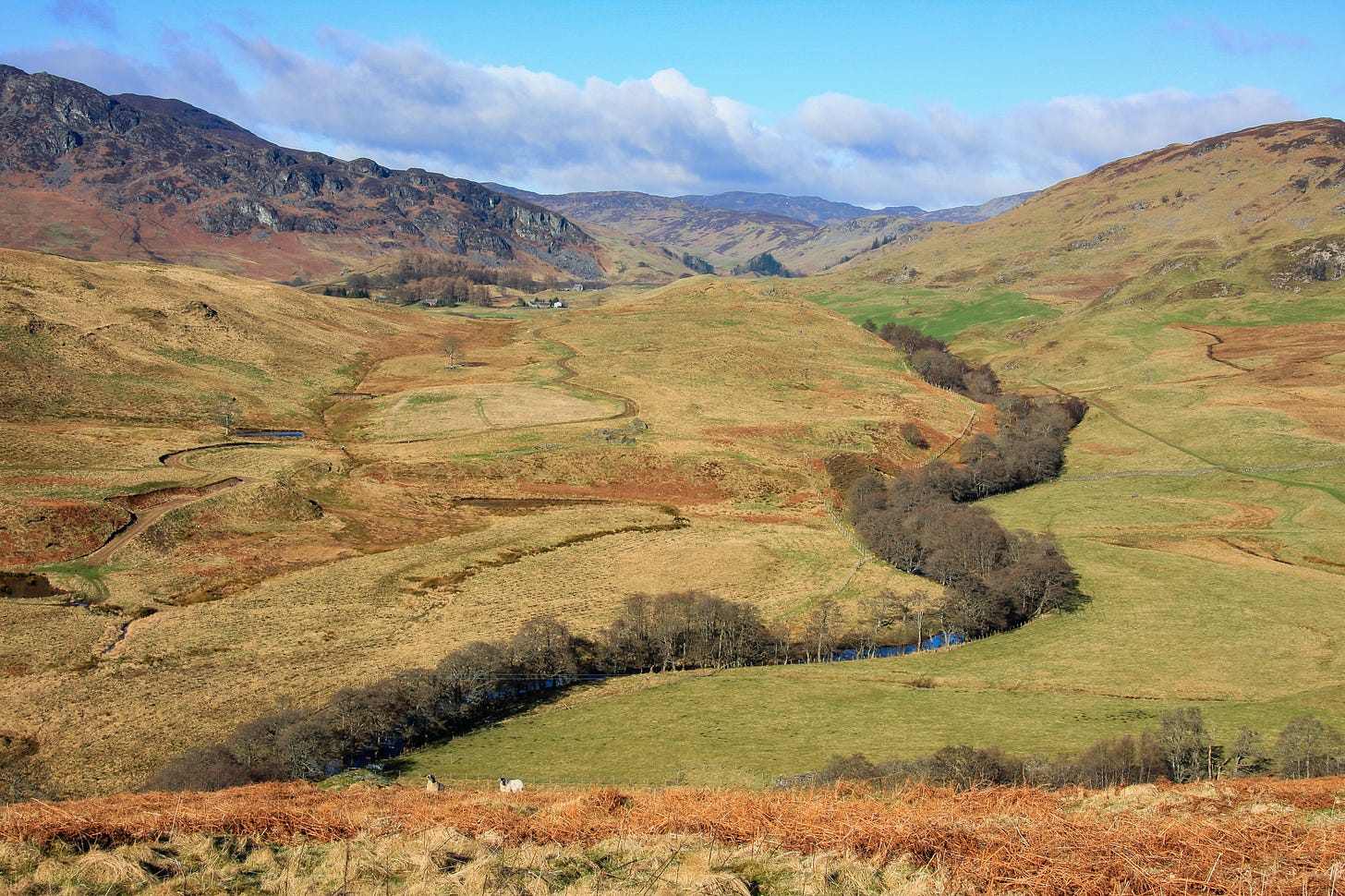
Around the same time another development came under public consultation – Glentarken Windfarm, proposed by SSE Renewables. The two wind farms share a wiggly boundary – the line between Invergeldie and Drummond Estate – and were originally conceived, before Invergeldie was sold, to be one single wind farm. If both are built they will be one continuous range of wind turbines, perched above the River Earn National Scenic Area (a designation that seems to count for little these days).
Oxygen Conservation
Unease grew with further developments, many heard about on the local grapevine rather than publicised by Oxygen Conservation.
The estate shepherd who told us at the open day about his future role in a more conservation-friendly regime was dismissed and the whole sheep flock was sold and shipped out.
Mass culling of red deer began happening at night using spotlights, with the heads, legs and other unwanted body parts being dumped by the side of the main track in a big stink pit. Those living up the glen were disturbed.
After sounding very amenable about it they later informed us that access up the hydro road to the dam would remain closed.
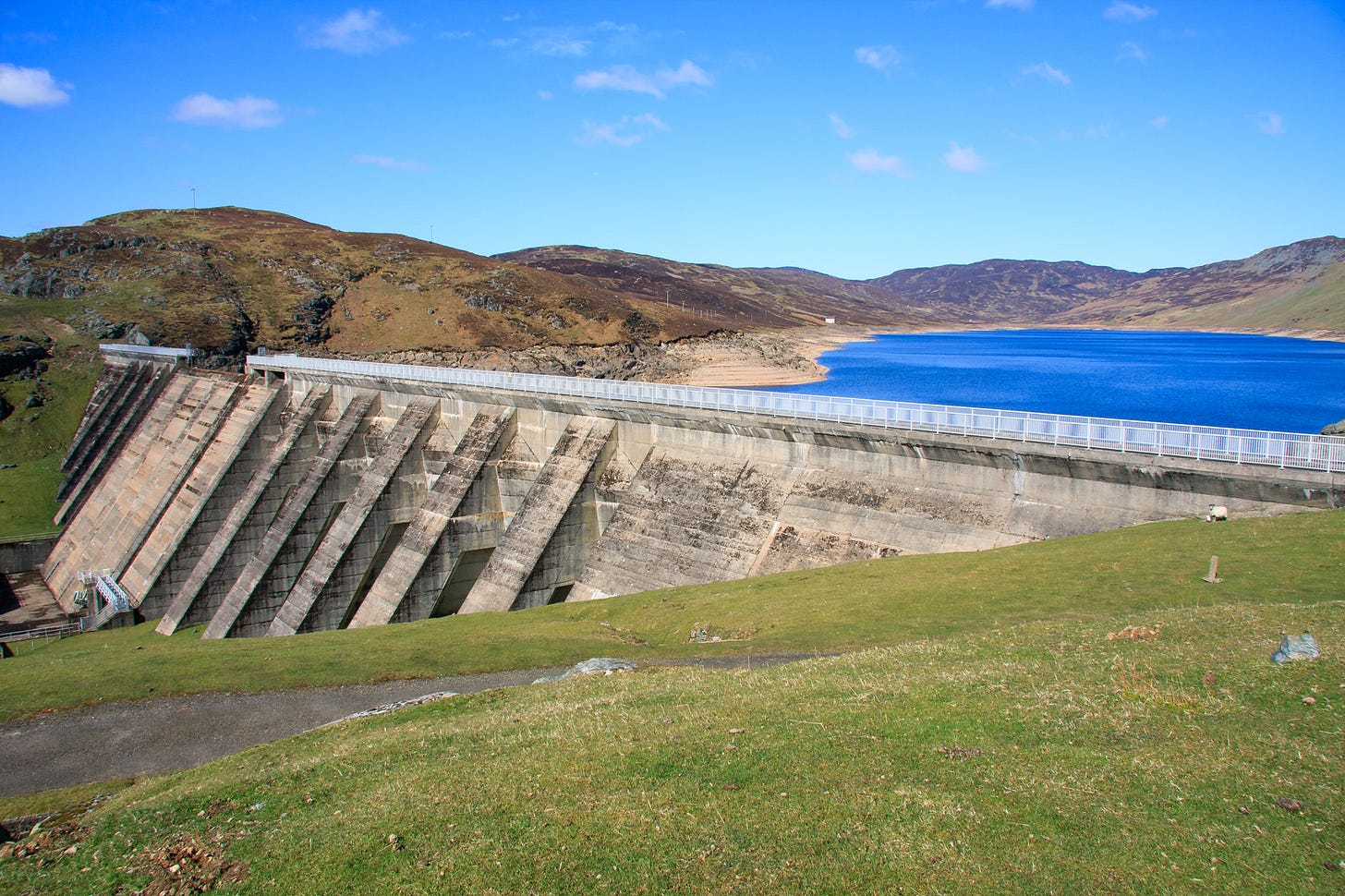
Under the leadership of its “innovative leader and environmentalist” CEO, Rich Stockdale, Oxygen Conservation is good at telling stories (it even has a job role called Head of Story Telling). He has a podcast where he interviews members of the team in ‘aren’t we wonderful’ discussions and produces a prolific (allegedly AI-generated) blog. They create flashy websites using latest multimedia tools.
What we are hearing from elsewhere in the Oxygen Conservation empire (including numerous recent land purchases, many of which have been funded by Triodos Bank) isn’t all sweetness and light. At Langholm, where they bought Blackburn & Hartsgarth estate adjacent to community-owned land, they have caused a huge outcry by planning to cull the wild goats of Langholm Fell.
In the Cairngorms, where they recently acquired Dorback Estate, Oxygen Conservation’s own publicity rather pointedly had a dig at other communities (possibly with Invergeldie Estate in mind), saying, “Working with local communities is hard – we’ve had some horrible experiences and people can be entitled and sadly sometimes aggressive.” Maybe a warning that locals there shouldn’t stand up for what they think is right in the face of city investors (who it could be argued appear entitled themselves). At least they won’t be able to build a wind farm there, as it’s in a National Park.
Where now?
At the latest consultation drop in, Low Carbon said that they planned to submit a planning application for Glen Lednock Windfarm by April. It doesn’t appear to be in yet, although their case has been going through the pre-application scoping process on the government’s Energy Consents Unit and in February they received a Scoping Opinion. I suspect that that document requires them to address a lot of issues that they have only paid lip service to so far.
The application for Glen Tarken Windfarm is already in and the date for representations about it has now passed, so we await to see what happens there. Of the two, it strikes me as the better researched and planned proposal, but with similar impact on the environment and wildlife. If both are foisted on us, there is a strong argument that there should be one single access point for all the turbines (dropping the ruinous one proposed up Glen Lednock).
This is already a long post, so I will finish here. In future I intend to examine in more detail the whole issue of ‘natural capital’ and look further into rewilding, community ownership and the work of the Scottish Land Commission.


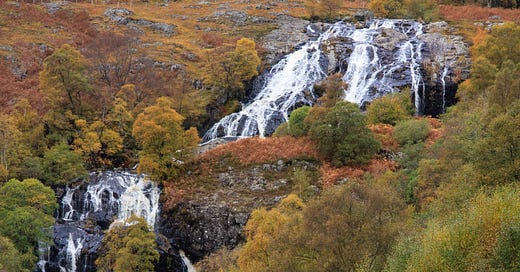



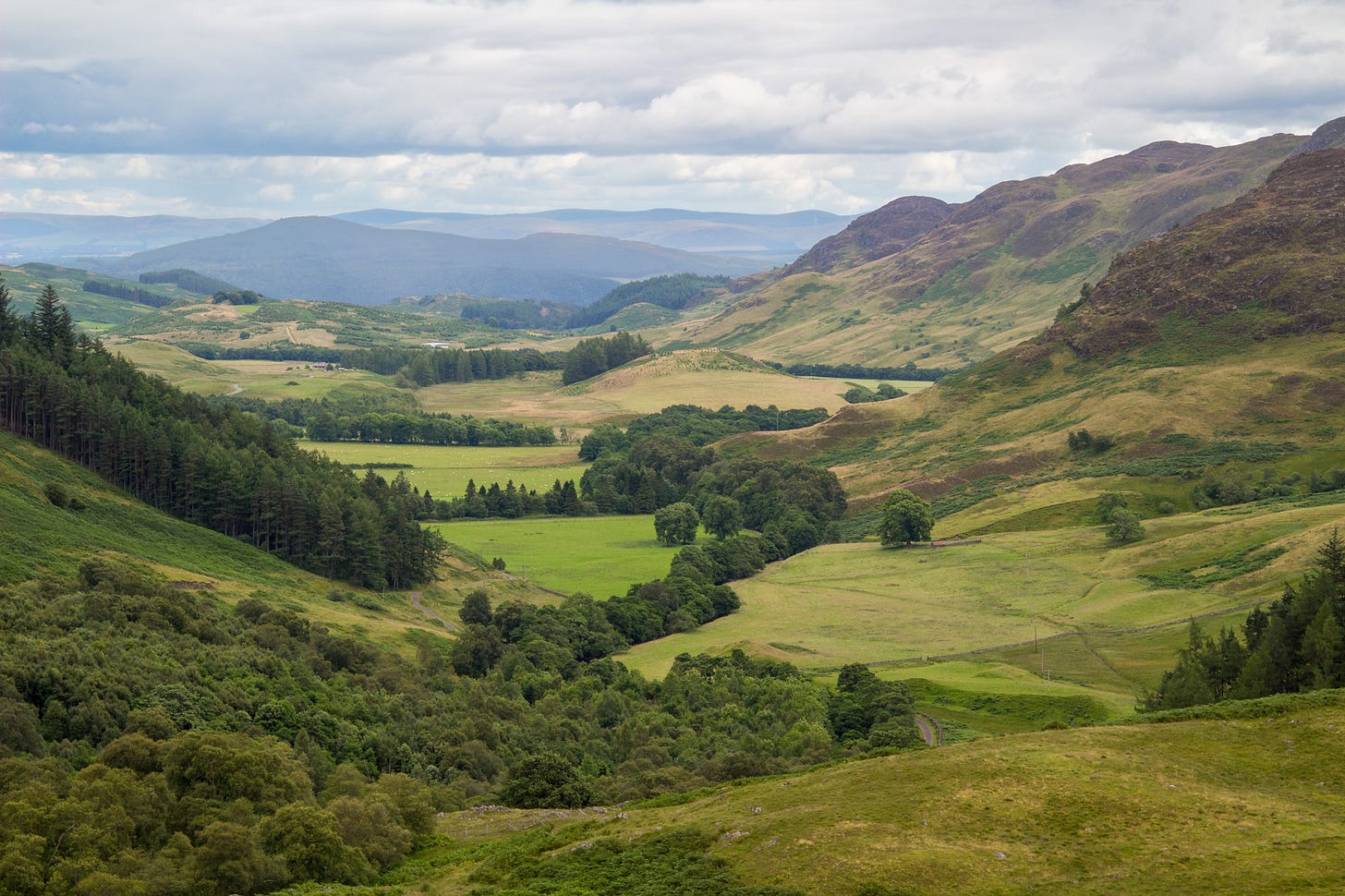
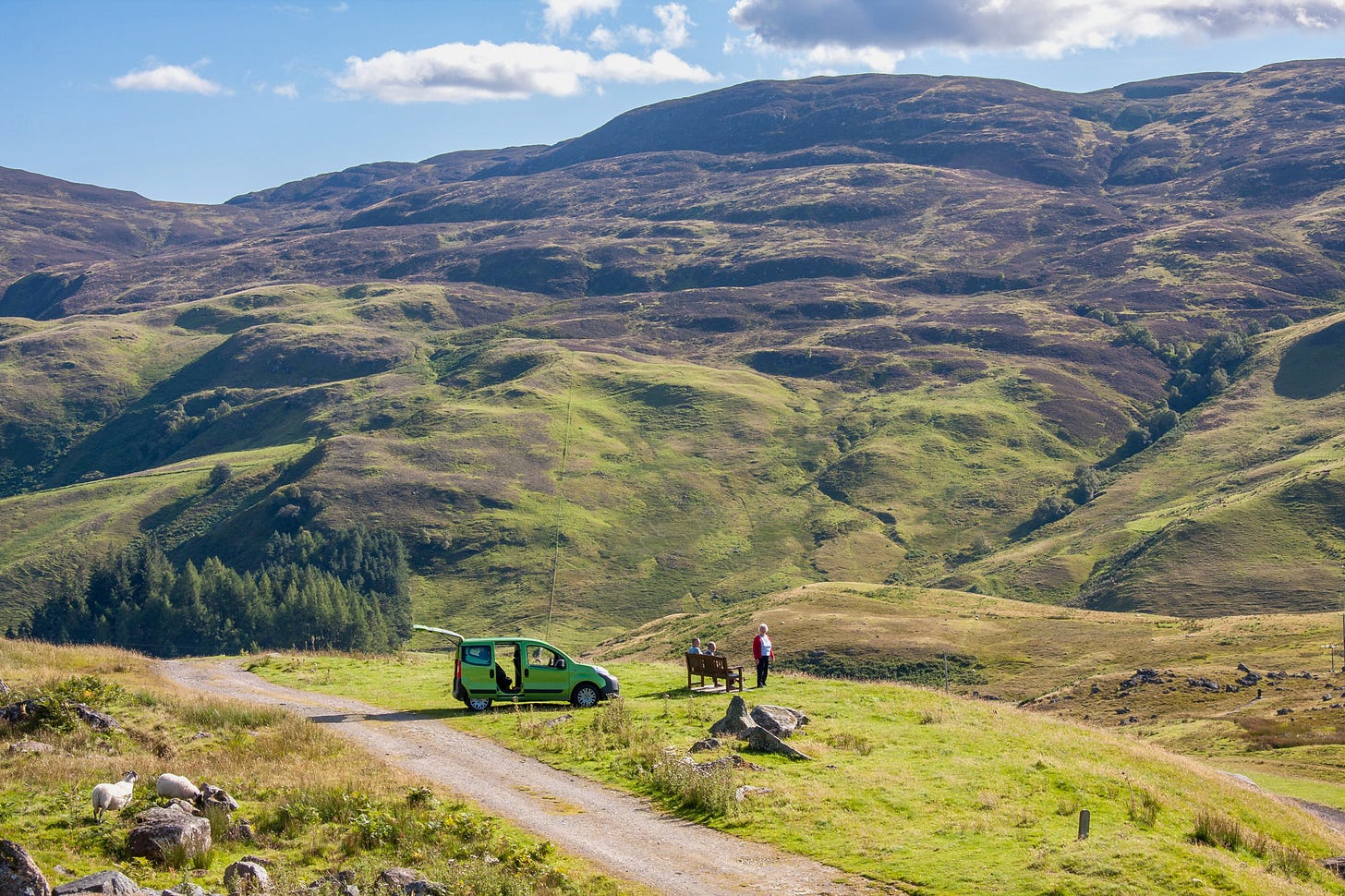
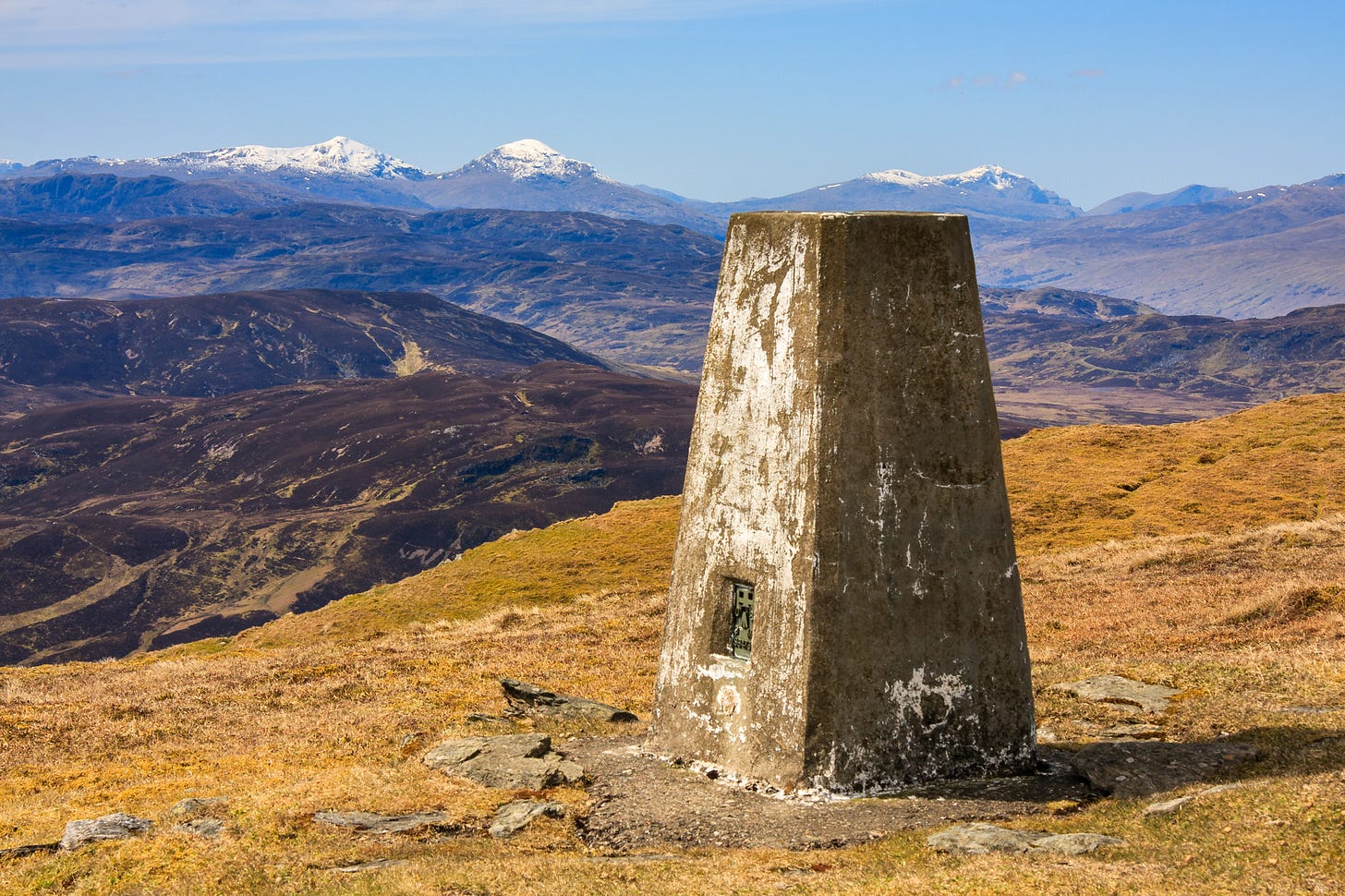
Hi, do you happen to have or know where to find an accurate map of the extents of Blackburn & Hartsgarth farms? I couldn't immediately find one except a zoomed out one in a .pdf for shareholders or something like that.
You know I feel your pain. https://www.gov.scot/publications/national-planning-framework-4/pages/3/ There is a presumption that green technology ie windfarms will be approved by the consents unit, although they must contain significant biodiversity enhancements, Nature Scotland can object to proposed plans when these are not clearly in place. This is a complicated document and I am not fully appraised of it, but there are ways to object. One windfarm near us has been rejected due to the impact on Arran. Nothing mentioned on the loss of biodiversity of Kintyre (though we have already been sold to the highest bidders). I have no objection to wind turbines, I have objection to unscrupulous companies who railroad local communities whose voices are unlikely to be heard in the scramble for green dividends for city shareholders. A high proportion of the profits will head off shore. The mantra of we will provide electricity for x thousands of homes, does not include local homes. Highland council have a new policy in place I understand where every new windfarm company must pay fair community benefits, Argyll failed to do the same.